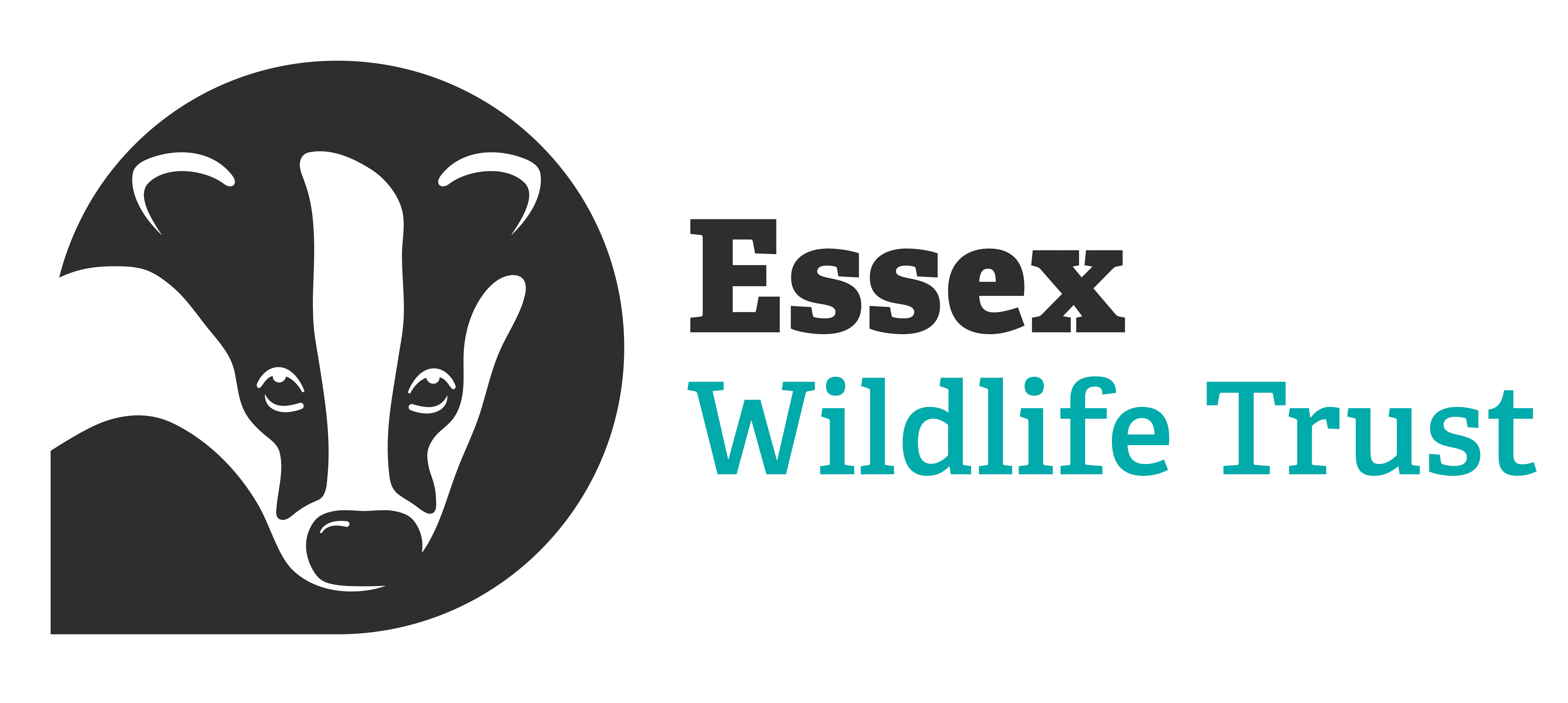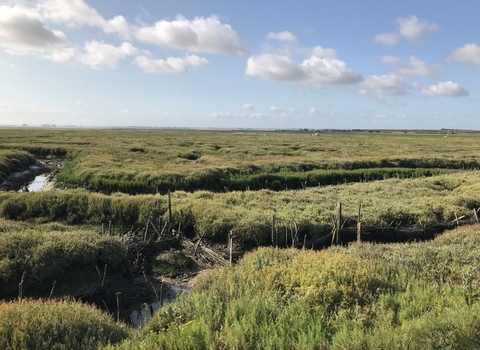It’s Week 1 of the Essex Coastal Challenge and we’re on the Thames Estuary – home to over 125 species of fish and other marine wildlife who share their busy home with massive container ships and local fishing fleets.
Welcome to the story of Essex’s beautiful coast. We’re starting right at bottom – stand by the thundering waters of the River Thames, turn your back to the bright lights of London and come east with us, out to sea…
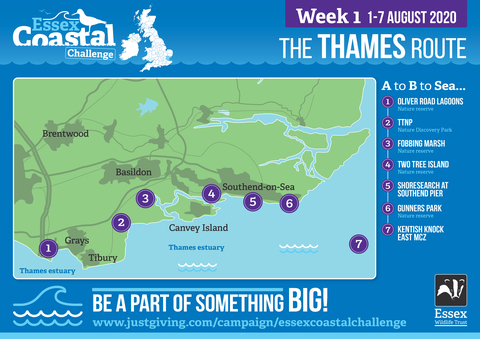
Oliver Road Lagoons [1]
We begin our journey just west of the Dartford Crossing at Oliver Road Lagoons. Surrounded by industry, it’s no ‘typical’ nature reserve – but for wildlife, it’s truly an oasis. Not yet open to the public, it’s a pretty special place to start. Thurrock Power Station once stood on this brownfield site and it left a precious gift to nature: the earth now contains Pulverised Fuel Ash (PFA), loved by over 1,300 species of invertebrates, birds and reptiles that now live here. Carpeted in wildflowers all summer long, you can spot 50 endangered species here and it’s even possible to catch a glimpse of the distinguished jumping spider - found on only 2 sites in the whole of the UK!
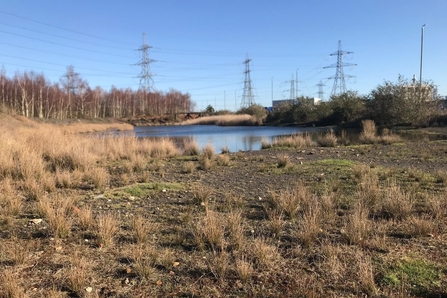
Its mudflats already form the single largest intertidal feeding area, for wintering waders and wildfowl, on the inner Thames Estuary. Next month the intertidal exchange sluice system from the Thames will be coming onto the lagoon, flooding it to provide important refuge for breeding and roosting wading birds as well as fabulous habitat for invertebrates to thrive.
Shrill and brown-banded carder bees buzz along the seawall near a 500 metre graffiti art gallery. Pass the enormous Tilbury Docks, Tilbury Power Station, depots and terminals – before stumbling across another, much larger sanctuary for nature…
Thurrock Thameside Nature Park (TTNP) [2]
One of Essex Wildlife Trust’s biggest ever restoration projects, the enormous 230-acre Thurrock Thameside Nature Park will cover 845 acres when complete. Now home to some of the UK’s most threatened species, TTNP sits on top of one of western Europe’s largest landfill sites! Fifty years of waste from six London boroughs, up to thirty metres deep, is now under your feet. This astonishing project is proof of nature’s resilience and offers hope to wildlife conservation, not only in Essex but across the globe.
The reserve has become a part of a larger picture, connecting with other habitats and allowing wildlife more freedom of movement in an increasingly fragmented and built-up landscape. In summer, the site is awash with colour as the meadows come to life with wildflowers, dragonflies, butterflies and bees. Since our 2015 Coronation Meadow project to increase wildflower diversity, you can find salsify, yellow rattle and bee orchids here. The hedgerows we have been planting provide valuable habitat for harvest mice, while snakes and lizards bask in the sun along the footpath verges. Soon, hopefully you’ll see more sand martin banks and a tern raft by the Heronry Shaw lake.
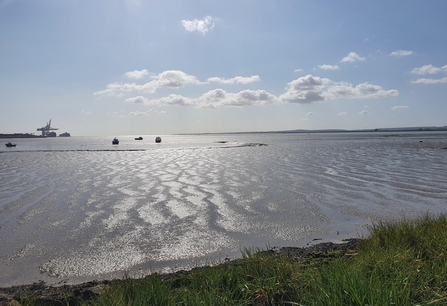
Did you know that many of our reserves run volunteer work parties? As a result of the pandemic, sadly our important volunteer work on sites like TTNP has had to stop. But when it is safe to do so, we’ll be back and would love you to join us!
Work alongside wildlife and find one local to you
Take in a breathtaking 360-degree view over Essex meadows to the north and the marshes, river Thames and Kent to the south from the park’s award-winning circular Nature Discovery Centre when it re-opens soon: you might see raptors such as kestrels, hobbies and buzzards flying overhead.
Past the nearby London Gateway, a vast transport and logistics hub with deep-sea port, railway terminal and business park you’ll find the Fobbing Flood Barrier, working hard to protect the Essex grazing marshes that you’re about to explore – for some of us, they’re true Essex.
Fobbing Marsh [3]
Find yourself at internationally important Holehaven Creek and the atmospheric and peaceful Fobbing Marsh. Accompanied by the haunting cry of the curlew, the wind whips across the marshes in the winter months – but today, dramatic and expansive skies provide the perfect photography opportunity. This week, with autumn just around the corner, you may start to see returning waders in the adjacent tidal creeks - and possibly even the rusty red summer plumage of the black-tailed godwit.
While you soak up the peace, picture a beautifully preserved WW2 plane buried 10 metres down in saltmarsh. A crashed Hurricane from the Battle of Britain was excavated here in March last year!
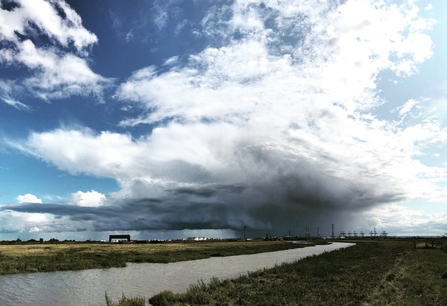
The ambitious restoration of Fobbing Marsh is one of Essex Wildlife Trust’s flagship projects over the next five years. We will transform the land and retain water to draw in the wintering wildfowl and waders. It will be the crucial ‘missing piece of the jigsaw’ for 6 miles of Thames marshes, connecting them up. We have many hurdles to jump over and a lot of hard work ahead of us to turn our vision into a reality, but it will be worth it: it will provide a true wildlife spectacle throughout the year, from large flocks of overwintering wigeon and teal to breeding lapwing and redshank, while water voles thrive in the wet ditches.
Support this huge project and others like it by becoming a member today
Take care as you navigate your way through marsh and creek, passing Canvey Island and following the seawall once again, with beautiful inland views over grassy wetland and the romantic remains of Hadleigh Castle.
Two Tree Island [4]
Arrive at Two Tree Island a 259 hectare island nature reserve inside the seawall, supporting coastal saltmarsh (one of the best surviving in the Thames Estuary), inter-tidal mudflats and important seagrass beds. Keep an eye out for pyramidal orchids and the gorgeous colourful fields of golden samphire and sea lavender. Then marvel throughout the year at the many, many species of wildlife that call Two Tree Island home.
The salty lagoon provides a high tide roost for many birds and it is also an important breeding site for avocet and common tern. Much loved by its locals, regular community litter picks keep it beautiful. Help your wildlife by taking your litter home with you so that it doesn`t end up in our seas.
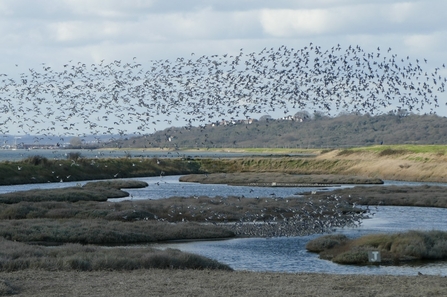
The landscape changes to an urban one as you wave goodbye to the marshes and travel parallel to the Shoeburyness coastal railway line, linking coastal communities that run into each other. We’re off to the Great British Seaside: to bustling Southend.
Look out to sea today, right at the end of Southend Pier - at 1.34 miles long, it’s the longest pleasure pier in the world. To small coastal species it is a colossal city that they call home. Millions of barnacles litter the structure, it is covered in periwinkles grazing on the algae, various wracks cling onto the Pier, stones and shells and crevices are filled with common shore crabs. So far, you’ve been travelling beside the watery home to many species, including pacific oysters (they form living reefs in some areas), cockles, slipper limpets and barnacles. You may even find a ‘mermaid’s purse’, an eggcase from a shark or ray like the thornback ray, thriving in the Thames.
Shoresearch [5]
Shoresearch is The Wildlife Trusts' national citizen science survey of the intertidal shore. Volunteers are trained to record the wildlife on shores across the UK, to monitor our fragile sea life and better understand the effects of pollution, invasive alien species and climate change. This will become even more important as we navigate the climate crisis. Last year over 120 volunteers took part in nine surveys in six locations, including in the Thames Estuary.
The Essex coast is so full of life and wonder! Anyone can get involved in protecting it through Shoresearch, just send us an email to be added to our mailing list.
Gunners Park [6]
Keep going to Shoeburyness headland. As you look out to the Thames river now becoming open sea, find yourself at Gunners Park and Shoebury Old Ranges, once military garrison and now a coastal nature reserve. A perfect spot for seabird watching, you will start to see spectacular autumn passage migration about now, as thousands of birds move through the park on their long journey south. Gannets, skuas, terns and even petrels have been recorded here.
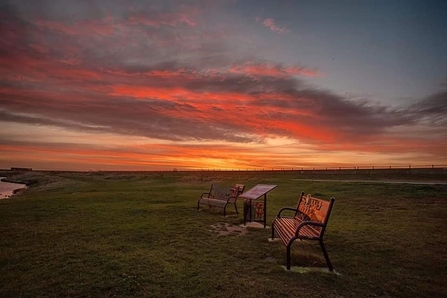
Believe it or not, out at sea towards the left is our final destination this week: a very special underwater landscape with sharks and great shoals of fish…
Kentish Knock East [7]
There is a network of 91 Marine Conservation Zones surrounding the UK, protecting our precious seas. Essex proudly has three of them. You’re looking in the direction of one: Kentish Knock East an impressive 96 square kilometres of protected marine habitat. In its sand and gravel seabed, hermit crabs scuttle below foraging rays and even catsharks.
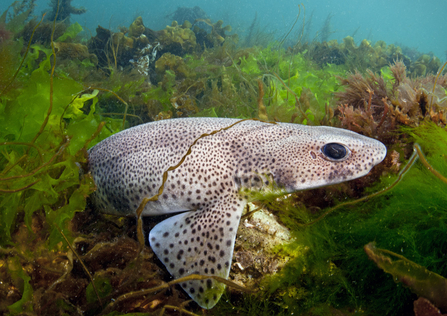
Marine Conservation Zones are the Nature Recovery Networks of the sea. We must protect our seas in order to address the climate crisis: oceans absorb 20-35% of human-made CO2 emissions every year. If we help our seas to recover, the seas can help us.
In 2018, over 22,000 people supported The Wildlife Trusts’ Wave of Support campaign calling for better protection for our seas. This summer, thousands of people have already supported our call to establish Highly Protected Marine Areas (HPMAs) within the year (by World Oceans Day 2021).
